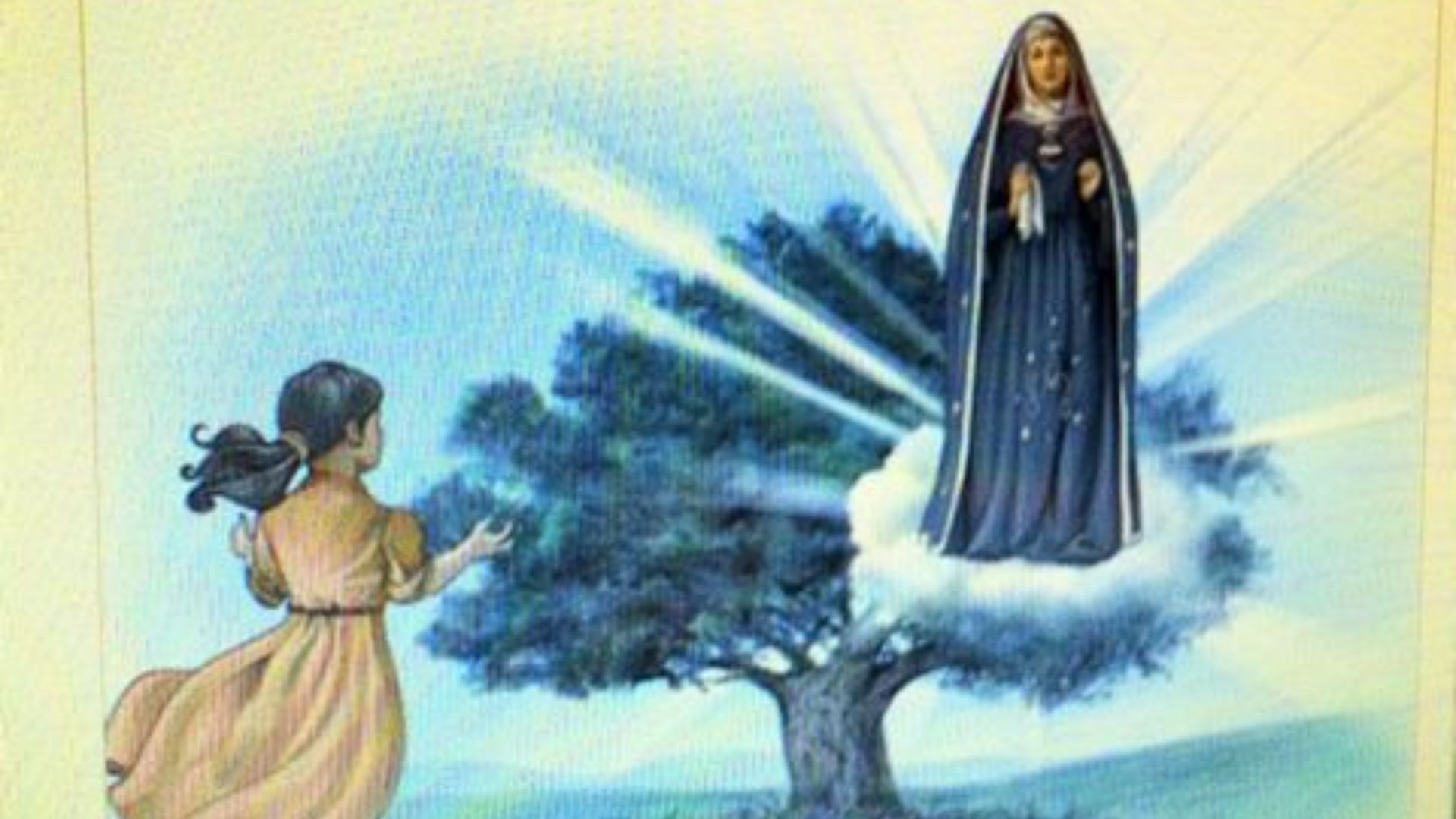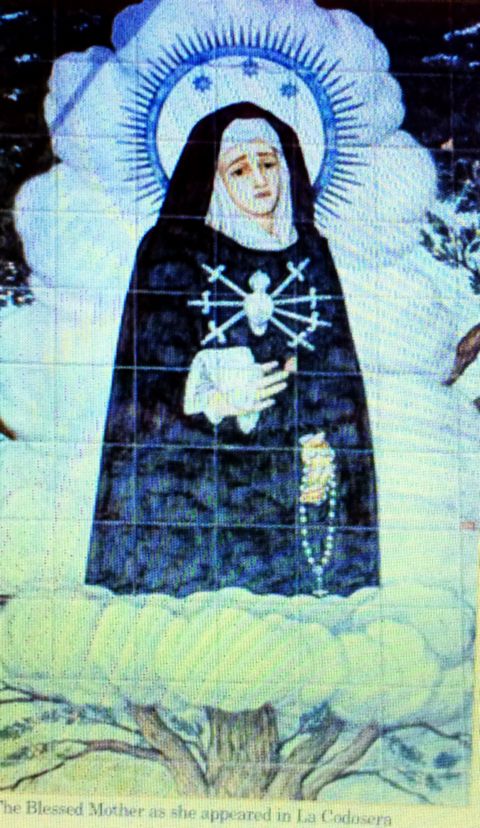The Dicastery for the Doctrine of the Faith has granted its approval for devotion to Our Lady of Sorrows at the Shrine of Chandavila in Spain, following a request from Archbishop José Rodríguez Carballo of Mérida-Badajoz. The Vatican's approval allows for the declaration of the "nihil obstat," a formal statement indicating that there are no objections to the devotion, despite the lack of certainty regarding the supernatural authenticity of the phenomenon.
In a letter approved by Pope Francis on August 22, Cardinal Victor Manuel Fernández, Prefect of the Dicastery, expressed the Vatican's support, emphasizing that the Shrine of Chandavila "may continue to offer to the faithful who wish to approach it, a place of interior peace, consolation, and conversion." This response followed a July 28 letter from Archbishop Carballo, which recounted events from 1945 when two young girls in the Spanish town of Chandavila, near the Portuguese border, reportedly experienced visions of the Virgin Mary as Our Lady of Sorrows.
The Vatican's guidelines, published on May 17, acknowledge that the "nihil obstat" recognizes "many signs of an action of the Holy Spirit," even without definitive confirmation of the supernatural nature of the events. The Dicastery's approval encourages the local bishop to appreciate the pastoral value of this devotion and to promote pilgrimages to the sacred site, allowing the faithful to "prudently adhere to it."
The devotion to Our Lady of Sorrows at Chandavila began toward the end of World War II, centered around the spiritual experiences of ten-year-old Marcelina Barroso Expósito and seventeen-year-old Afra Brígido Blanco. These two girls separately reported visions in the same location starting in May 1945.
Cardinal Fernández described the experiences of Marcelina, and noted that more than the vision itself, it was Marcelina's profound experience of feeling the Virgin's embrace and kiss on her forehead that was most significant. This assurance of Our Lady’s close and affectionate presence, he added, "is perhaps the most beautiful message."
The Cardinal further explained that although both Marcelina and Afra eventually identified the figure as the Virgin of Sorrows, the most striking aspect was the presence of the Virgin, which instilled consolation, encouragement, and confidence. He recounted an instance where the Virgin asked Marcelina to walk on her knees through a stretch of sharp stones and chestnut hedgehogs, assuring her, “Do not be afraid; nothing will happen to you.” This act was not meant to cause suffering but to encourage trust in the Virgin's love.
Cardinal Fernández highlighted the tenderness of Mary, as seen in the simple mantle made of reeds and grasses that protected Marcelina’s knees. This, he said, was a beautiful expression of Mary’s care. He also pointed out the beauty of the Virgin's appearance, surrounded by luminous constellations in the clear sky of Extremadura.
Cardinal Fernández concluded that there is "nothing one can object to in this beautiful devotion," which reflects the simplicity of Mary of Nazareth. He noted the many positive signs, including conversions and healings, that indicate the action of the Holy Spirit among the pilgrims who visit the site from Spain and Portugal.
The Cardinal also recalled the Jubilee of 2020, celebrated on the 75th anniversary of the Chandavila experiences, which was recognized by the then-Archbishop of Mérida-Badajoz as a blessing for the Diocese.
The full letter from Cardinal Fernández can be read in English on the website of the Dicastery for the Doctrine of the Faith.
The Miraculous Apparitions at Chandavila
On May 27, 1945, ten-year-old Marcelina Barroso Expósito and her cousin, Augustina, were on an errand for Marcelina's mother, walking through the area known as Chandavila. As they made their way, something strange caught their attention in the distance. Initially inclined to ignore it, the girls soon found themselves inexplicably drawn to a chestnut tree where they had noticed the odd sight. To their amazement, Marcelina alone saw a vision of Our Lady of Sorrows hovering just above the ground. The Virgin was unmistakable, draped in a black robe and mantle adorned with stars, her hands joined in prayer, and her beautiful face etched with deep sorrow and overwhelming sadness.

Young Marcelina spots the weeping Virgin Mary hovering near a chestnut tree
Overcome by what she had witnessed, Marcelina ran back to the village with her cousin, sharing her vision with the community, who greeted the news with excitement and reverence.
Days later, on the morning of June 4, 1945, Marcelina returned to the site of the apparition and once again beheld the Virgin Mary. This time, the Blessed Mother spoke to her, instructing her to return that afternoon when she would ask Marcelina to perform a sacrifice in front of all who attended. Word spread quickly, and by the afternoon, a crowd of about one thousand people from both Spain and Portugal had gathered. As Marcelina made her way to the site, she entered into an ecstatic state, a condition that hundreds of onlookers witnessed in awe.

“Our Lady of Sorrows” with a pierced heart over the chestnut tree
When Marcelina arrived at the chestnut tree, she saw the Virgin Mary at a distance. The Blessed Mother invited her to crawl on her knees towards her—a distance of approximately one hundred feet. Reassuring Marcelina, the Virgin said, “Fear not. Nothing will harm you. I will be putting before you a reed mat and herbs so that you will not be hurt.” Despite the sharp rocks and rugged terrain, Marcelina made her way forward, her mother fainting at the sight of her daughter's ecstatic state. When Marcelina reached the tree, she knelt there for about ten minutes, experiencing a vision of a beautiful church with the Virgin Mary standing at the altar. The Blessed Mother invited Marcelina to dip her fingers in holy water and bless herself. When asked if she would like to join the Virgin in heaven, Marcelina eagerly responded, “Yes, Ma’am, now!” The Virgin smiled, kissed Marcelina on the forehead, and gently touched her face with her mantle. She then requested that a chapel be built at the site of the apparitions.
When the vision ended, Marcelina returned to her normal state, and those around her, including the village pastor, Father Juan Antonio Galán y Galán, examined her for injuries. Astonishingly, despite crawling over sharp objects, Marcelina's knees and body showed no signs of harm, leaving the onlookers amazed.
As news of Marcelina's encounters with the Blessed Mother spread, more people flocked to the site. Among them was 17-year-old Afra Blanco Brígido, who visited the site on May 30, 1945. Afra initially saw something dark in the clouds, and when she returned the next day, the object drew closer, revealing itself as Our Lady of Sorrows. The vision deeply affected Afra, causing her to faint. Days later, after the death of her grandmother, Afra joined her friends for another visit to the site. This time, both Afra and Marcelina experienced a vision of the Virgin together. The Blessed Mother imparted a secret to Afra, predicted great suffering, and asked her to kiss Marcelina. She then requested the recitation of the Rosary and once again called for a chapel to be built on the site.
In the following weeks, Afra and Marcelina traveled to Villar del Rey to give thanks for the favors they had received from the Virgin Mary. While participating in the Way of the Cross, Afra experienced a vision of Christ's Crucifixion and developed the stigmata—wounds on her hands and feet that caused excruciating pain and bled mainly on Fridays. Despite numerous medical examinations, the wounds could not be healed, and they emitted a sweet fragrance.
In 1975, Marcelina joined the Congregation of the Sisters of the Cross, taking the name Sister Mary of Mercy of the Cross. She dedicated her life to caring for the sick, orphans, the poor, and the elderly. Later, she joined a cloistered convent in Ciudad Real. Afra worked for many years in a hospital in Madrid until her death on August 23, 2008, after a long and painful illness.
In response to the apparitions, a beautiful church was eventually constructed at the site, enveloping the chestnut tree where the Blessed Mother had appeared. The Bishop of Badajoz granted permission for the construction of the church and formally approved the apparitions and the Expression of Faith, solidifying Chandavila's place as a site of deep spiritual significance.